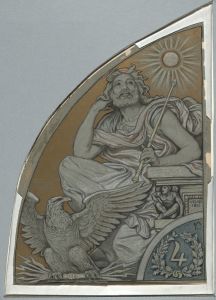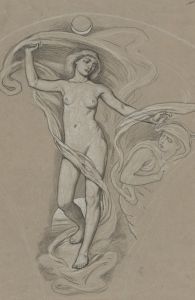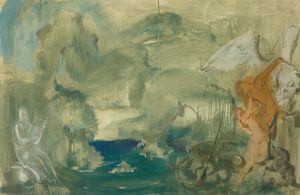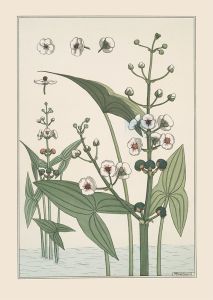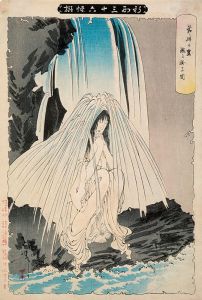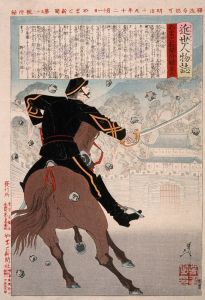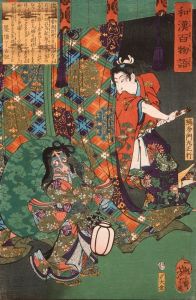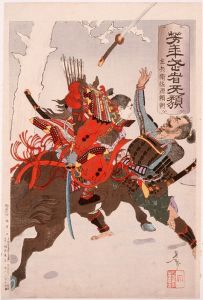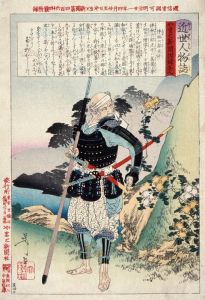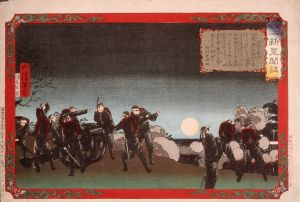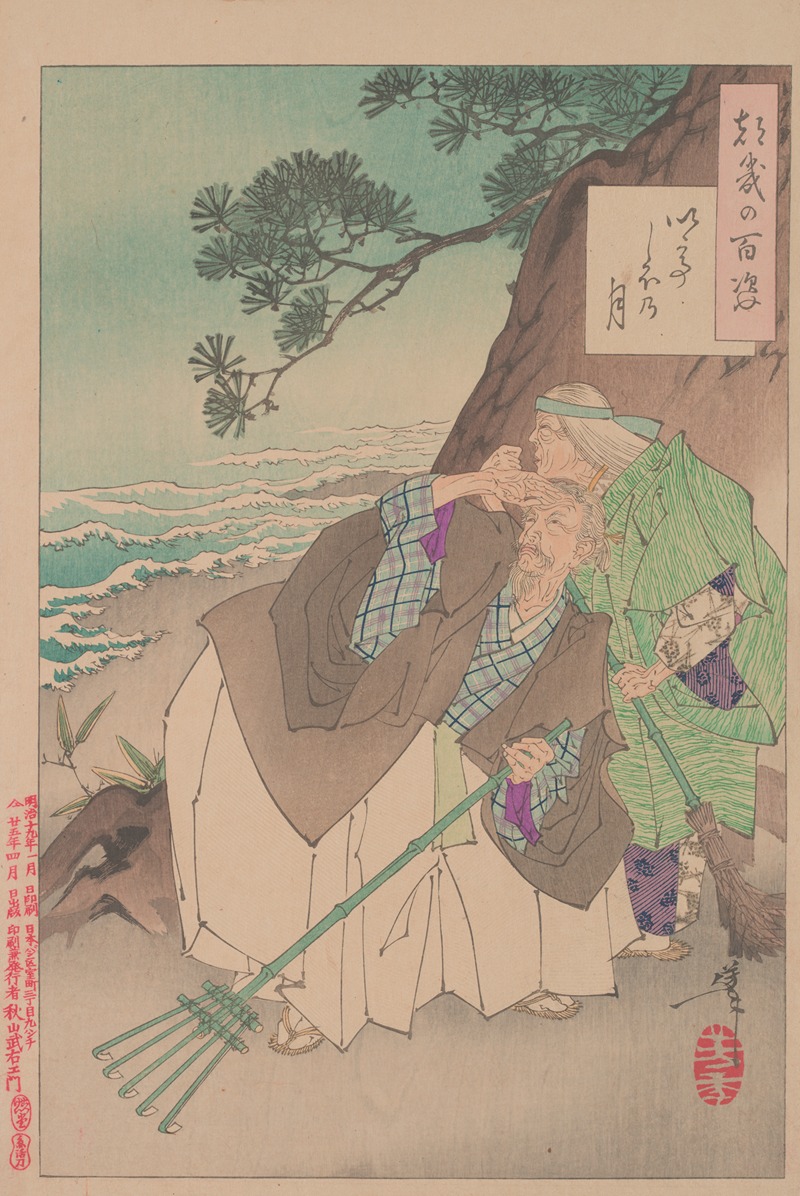
The moon at high tide
A hand-painted replica of Tsukioka Yoshitoshi’s masterpiece The moon at high tide, meticulously crafted by professional artists to capture the true essence of the original. Each piece is created with museum-quality canvas and rare mineral pigments, carefully painted by experienced artists with delicate brushstrokes and rich, layered colors to perfectly recreate the texture of the original artwork. Unlike machine-printed reproductions, this hand-painted version brings the painting to life, infused with the artist’s emotions and skill in every stroke. Whether for personal collection or home decoration, it instantly elevates the artistic atmosphere of any space.
"The Moon at High Tide" is a woodblock print by the renowned Japanese artist Tsukioka Yoshitoshi, who is celebrated for his contributions to the ukiyo-e genre during the late Edo and early Meiji periods. Yoshitoshi is often regarded as one of the last great masters of this traditional Japanese art form, which flourished from the 17th to the 19th centuries. His work is known for its dynamic composition, vivid colors, and innovative use of traditional themes.
Yoshitoshi was born in 1839 in Edo, now Tokyo, and began his artistic training at a young age under the tutelage of the ukiyo-e master Utagawa Kuniyoshi. Throughout his career, Yoshitoshi produced a wide array of prints that depicted historical scenes, kabuki actors, beautiful women, and supernatural themes. He is particularly noted for his series "One Hundred Aspects of the Moon," which was published between 1885 and 1892. This series is considered one of his masterpieces and showcases his mature style and technical prowess.
"The Moon at High Tide" is part of this acclaimed series, which explores various aspects of Japanese folklore, history, and literature, all unified by the motif of the moon. Each print in the series captures a unique moment or story, often imbued with a sense of mystery or drama. Yoshitoshi's fascination with the moon reflects its cultural significance in Japan, where it is often associated with beauty, melancholy, and the passage of time.
In "The Moon at High Tide," Yoshitoshi employs his characteristic attention to detail and composition to create a scene that is both visually striking and emotionally evocative. The print likely features a figure or figures set against a backdrop that includes the moon, rendered with Yoshitoshi's signature use of color and line. His ability to convey emotion and narrative through his prints is evident in the way he captures the interplay between the natural world and human experience.
Yoshitoshi's work, including "The Moon at High Tide," is celebrated for its ability to bridge the traditional and the modern. During a time of significant social and political change in Japan, his prints reflect both a reverence for the past and an engagement with contemporary themes. This duality is part of what has made his work enduringly popular and influential.
Today, Tsukioka Yoshitoshi is remembered as a pivotal figure in the history of Japanese art. His prints continue to be studied and admired for their artistic merit and cultural significance. "The Moon at High Tide," like many of his works, offers a window into the rich tapestry of Japanese tradition and the innovative spirit of an artist who was ahead of his time.





